The GYROTONIC Expansion System vs. Pilates: A Trainer’s View on These Movement Systems
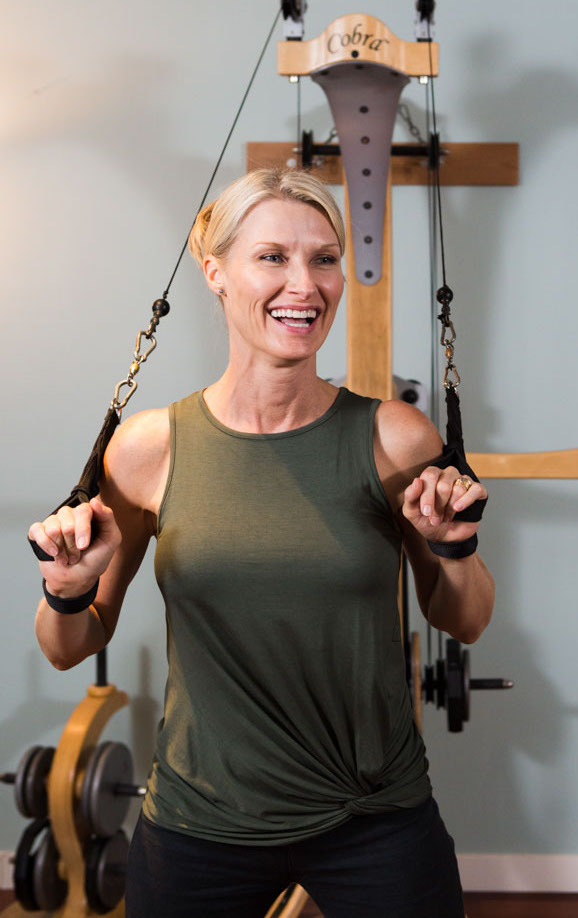
Ana Michalowsky: In your experience, what main distinctions have you found between the GYROTONIC EXPANSION SYSTEM® and Pilates?
Gail Bolte: In Pilates, the main focus is core strength—awareness of controlled movement to achieve alignment—with a big focus on moving your bones and muscles to achieve new patterns of movement. The GYROTONIC® Method explores the flow of movement with circular motions in all the joints, providing strength and flexibility simultaneously.
Both systems support moving with connection and fluid motion throughout the body. Pilates is a two-dimensional, linear system, keeping the range of motion within the boundary of the lines. Meanwhile, the GYROTONIC® Method is a three-dimensional system, allowing for larger ranges of motion through circular motions, spiraling of the spine and joints, and undulating movements.
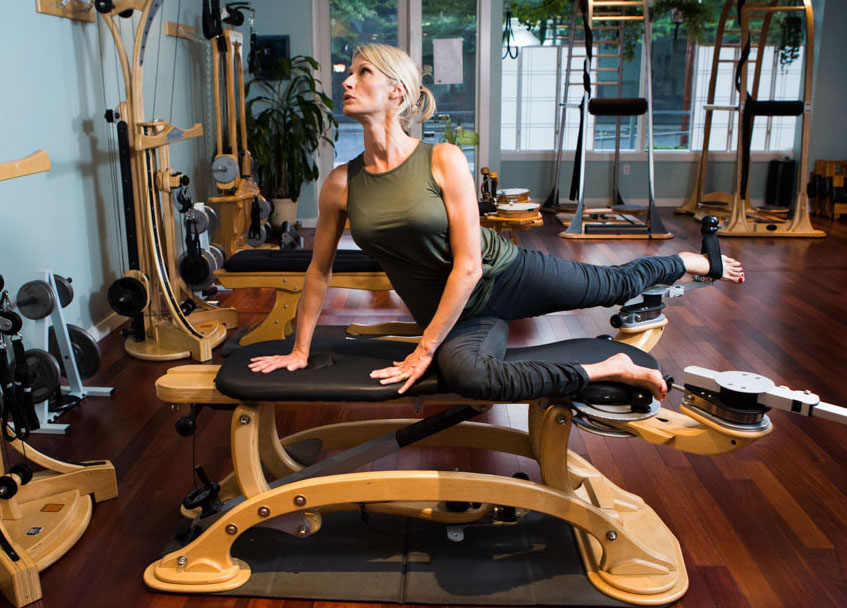
Ana: How does this impact your experience of the movement systems as a practitioner and a trainer?
Gail: With Pilates, you have to get to a very advanced level to get into the nuances of mind-body movement. Initially, Pilates is very linear. You’re separating the bones and opening the joints with simple front to back, side to side, or single plane twisting movements. Pilates was created for rehabilitation, and it can be like physical therapy, where you get specific therapeutic exercises.
The GYROTONIC EXPANSION SYSTEM® is very organic. It was created to strengthen the mind-body connection, clearing out the energy pathways. In the fundamentals, you’re working on many different planes of motion. It complements how your spine and joints inherently work: you’re supposed to be strong in every area of your joints, and that is what the system does for you. With the functionality of the movement, GYROTONIC® exercise prepares you for any and every possible injury you could have, even preventing injury.
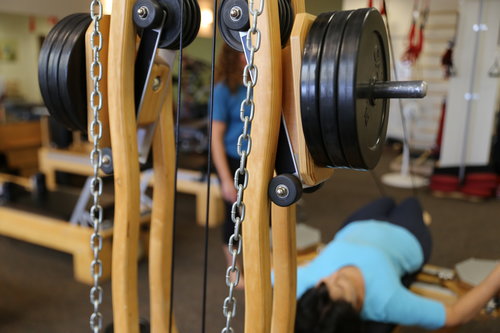
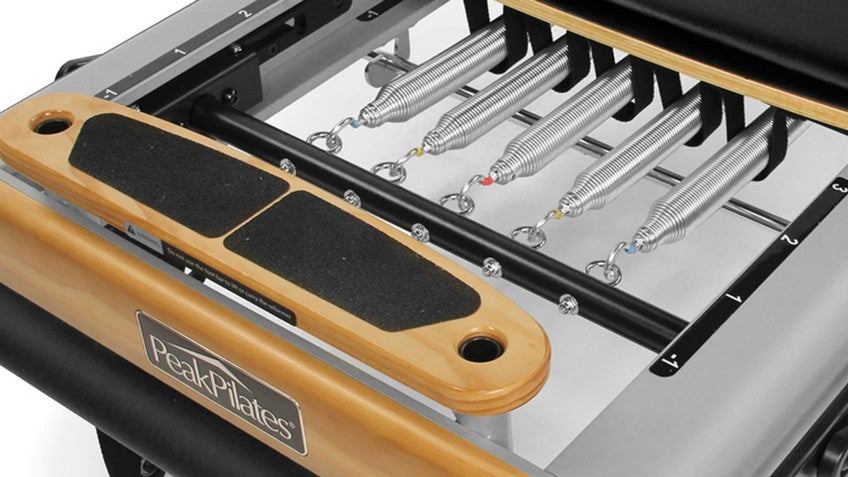
Ana: How do the different machines—one with coils and the other with pulleys—produce differences in movement?
Gail: Both systems provide resistance, and both systems allow you to make adjustments in order to move smoothly. Thinking about the Pilates I’ve done in the past, I felt like I was on a track—I could curve outwards on the track, but I was on a specific track. For me, it put pressure on my joints, where GYROTONIC® exercise actually takes pressure off my joints. The way the GYROTONIC® equipment is made, you have the ability to explore many different ranges of motion simultaneously.
With something like the handle unit in the GYROTONIC® Method, initially it just teaches people how to rotate their shoulder in their joint. I’ve had people come in and simply do that and say, “My shoulder’s been killing me for years, but this in one session has made it feel better. I don’t know how that happened.”
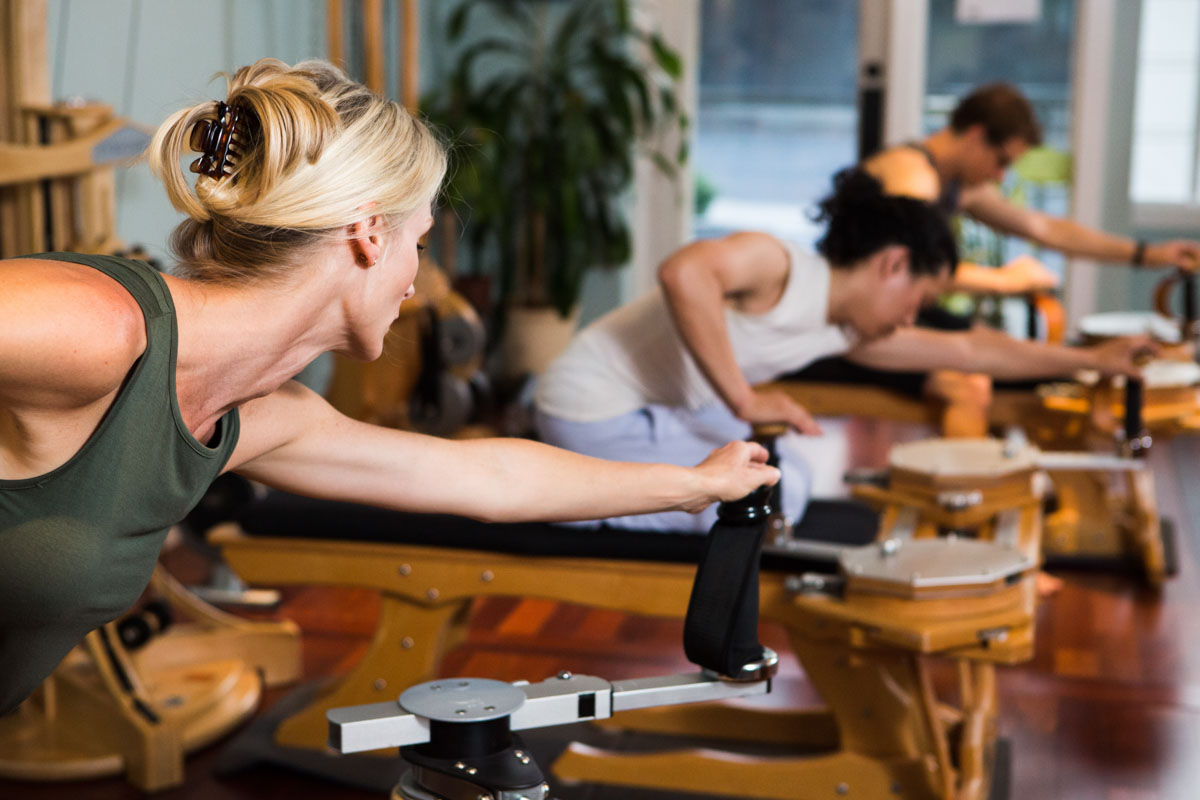
Ana: As a practitioner, how did you come to these different exercise systems?
Gail: I’ve always been an active person. After having children, I wasn’t able to run, jump and lift weights because it put too much pressure on my joints, so I began to search for other forms of movement. I practiced a bit of yoga but got injured throwing my body out of alignment. I decided to take some Pilates lessons, mainly Reformer classes, and could feel myself getting stronger and more limber. After a couple years taking Pilates classes, I went through the training and apprenticeship to become an instructor. When teaching at my first studio, I discovered the GYROTONIC® Method and went through the teacher training. Since 2010, I’ve mainly been teaching GYROTONIC® classes only.
Ana: With your history in Pilates, what led you to focus on the GYROTONIC® Method?
Gail: I decided to step away from Pilates because my intuition told me that my body was looking for something that felt more organic. I also felt a wonderful sense of euphoria after a GYROTONIC® workout. A lot of people say it feels like they just had a massage. The reason is that, if you have a massage, someone is trying to work through stuck places for you and smooth them out; with a GYROTONIC® workout, you’ve done it in a very different way.
Ana: Did you have the same experience with Pilates?
Gail: Pilates provided me with the post-workout adrenaline rush, but not the same high that you could achieve after a GYROTONIC® workout. But this is me talking—it could feel completely different for other people.
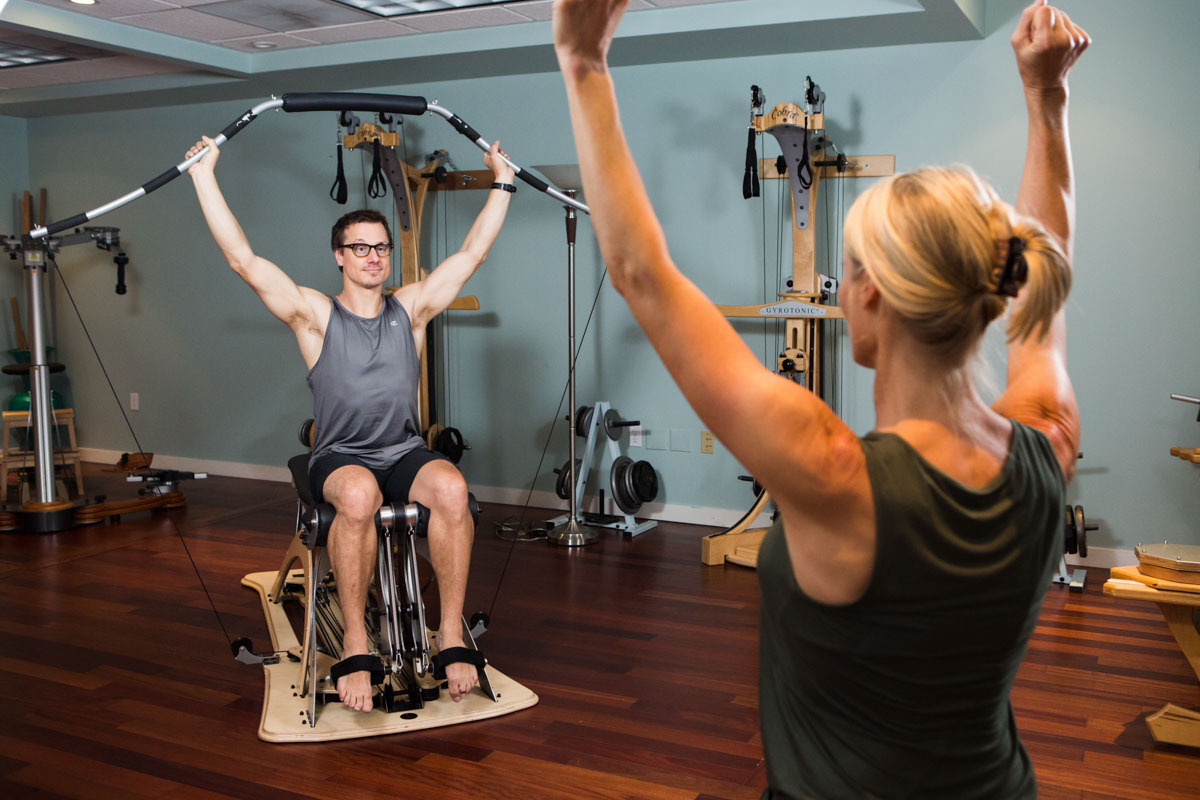
Ana: As a trainer, could you bring to life how beginning a new practice might look in each system?
Gail: With all new clients, I ask what brought them there, the goals they are trying to achieve with regard to their body, and if they have any injuries they are currently treating. Then, we can create a balanced plan that addresses all their needs.
In the GYROTONIC EXPANSION SYSTEM®, the first lesson is going through the whole articulation of the foot. If you get all parts of your feet to work, then all the muscles in your leg will work. It starts from the bottom and works its way up. With the GYROTONIC® Method, we’re trying to balance everything all the time. We’re not isolating anything but rather recruiting everything.
Initially with Pilates is the Reformer movement, which involves bending and straightening your legs and going up on your toes and back to your heels. With this movement, people can use their thighs without engaging the whole back line of the leg. It is simpler and can be muscled through.
Ana: Would you say one system would be more accessible than the other for people with injuries or different fitness levels?
Gail: Both systems have levels of progression, where each exercise builds on the next. Accordingly, both systems can be practiced by people of varying ages, strengths, and flexibility levels. Overall, they both can improve your ability to move with more strength and flexibility, and they provide a greater awareness of how your body can move.
Ana: If someone new to both exercises came to you asking advice about which to try, what would you say?
Gail: People have asked me, “Which one should I do? Which one should I do more of?” And my answer is, “Do whichever one makes you feel good.” That’s what this is all about: what works for you and your body. And they can be complementary. It just depends on what you need and what you’re looking for. I am very biased to the GYROTONIC EXPANSION SYSTEM® because of the relationship that I have personally with the system. The GYROTONIC® Method feels limitless to me.
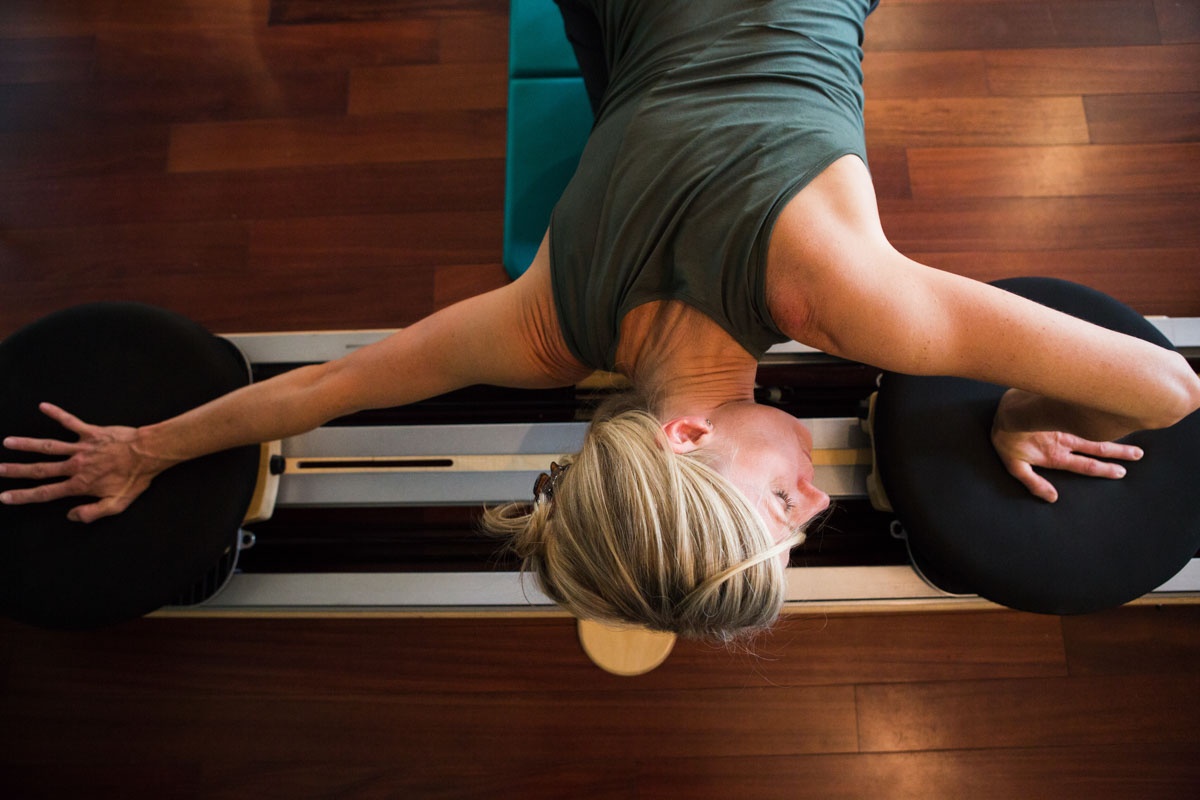
Ana: What makes the GYROTONIC® Method so special to you?
Gail: The GYROTONIC® Method served my body and helped me unwind things that I just couldn’t reach with Pilates. The GYROTONIC EXPANSION SYSTEM® has a subtle way of creating strength in the body that is difficult to define. For example, I may have difficulty executing a particular GYROTONIC® movement. Then I can step away from that exercise and come back at a later time and have ease with it. This is because everything you do in this system sets you up for later success.
In essence, GYROTONIC® movement is supposed to feel like nothing. If you get to a place in your body where you have the openness, strength and balance, when you do the movements, they don’t feel hard. They feel like going back and forth through water. People say it is like Tai Chi or Qigong, and it has that kind of push and pull, not forcing things to happen or adding extra weight where you don’t need it.
The best way to understand if a certain modality works for you is to try it and see how your body responds. Sign up for our Introduction to GYROTONIC® package, which includes 5 private sessions with one of our talented trainers.